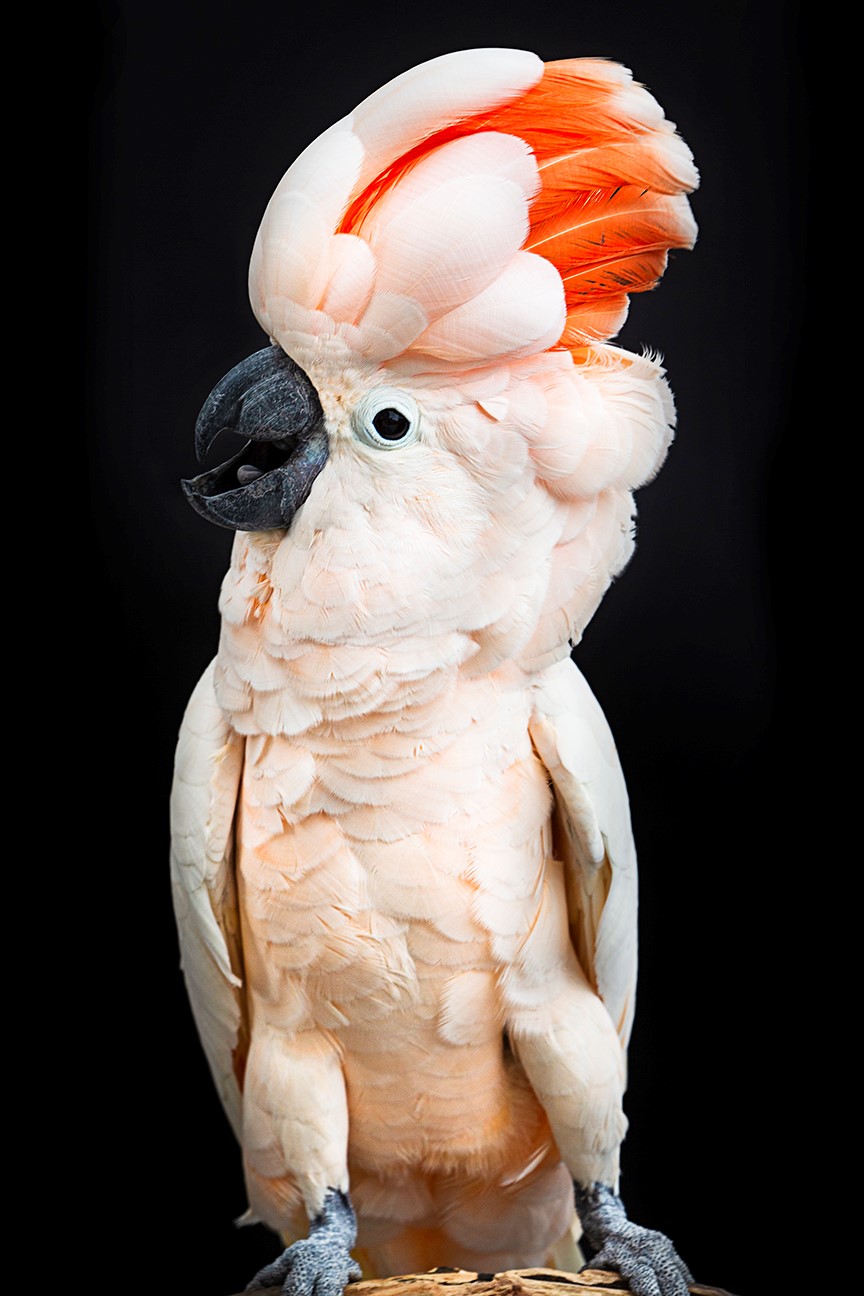Moluccan Cockatoo
Moluccan Cockatoo

Diet: Mainly of seeds, fruit and coconuts
Weight: 1.87 pound
Size: 18 inches
Life Span: 65 years
The Moluccan Cockatoo is also known as the Salmon Crested Cockatoo because of the salmon colored feathers that are on the back of their necks underneath the crest. The crest is the section of feathers that they are able to move upwards or flatten depending on their emotions. These birds are among the largest of the white cockatoos.
They are very east to tame and train and they are able to learn many mimics of many sounds. The Moluccan Cockatoo are one of the loudest birds with calls up to 129 decibels and they have a consistent need to chew.
Our Moluccan Cockatoo is named Mickey. He was given to us by a local exotic bird rescue. He is very playful and affectionate and loves the attention of anyone and will show off by dancing and bobbing his head. Mickey came in learning how to make many songbird noises and is learning the scream from the children that come to see him.
African Gray Parrot
Range: Equatorial Africa
Diet: Frugivorous including fruit, nuts, and seeds
Weight: 14 ounces
Size: 13 inches
Life Span: 23 years in the wild. 40-60 years in captivity
The African gray parrot is monogamous, stays with one mate, as the females nest solitarily in a tree with a hole for her eggs.
One defense mechanism is fluffing up to look larger and biting.
The African gray is considered to be one of the most accomplished mimics. Parrots, when raised by humans, show an amazing ability to mimic people and noisy objects, but in the wild they have never been observed mimicking. They are highly intelligent and show a cognitive level of a 4-6 year old child in some tasks. African Grays can learn number sequences, voice recognition, and can use its known English vocab to describe new objects that it doesn’t know the name.
Our African Gray parrots name is Sam. He was surrendered to us by a local exotic bird rescue. He enjoys cooing and cat calls. We are currently working with him to give kisses.
Eclectus Parrot
Range: Solomon Islands
Diet: Herbivore including fruits, seeds, nuts, berries, blossoms and nectar
Weight: 0.97-2.2 pounds
Size: 17-20 inches
Life Span: 30-40 years in the wild and 50-60 in captivity
Our two Eclectus Parrots are up on the top right above the mermaid cove..The Eclectus Parrot has extreme sexual dimorphism which means that you can tell the difference between males and females. The males are mostly a bright emerald green color with red under their wings. The females are mostly that same color of red with some purple/blue feathers. Until the early 20th century, the males and females were considered to be different species because of this color contrast.
Eclectus parrots are easily trained. They are very vocal and may mimic human speech, coo, whistle, squeal, and make bell sounds.
Our male Eclectus parrots name is Kiwi. He has been trained to push a mini shopping cart around, put a squishy ball inside the cart and continue pushing it and to put a coin in a piggy bank to finish up his shopping trip. He also has learned to play basketball.
Our female Eclectus parrot is named Ariel. She is super sweet and loving and will probably be the first bird you will hear.
Green Aracari

Range: Tropical Rainforests and Savannahs of Northern South America
Diet: Fruit, nuts, insects, and animal prey
Weight: up to 5.6 ounces
Size: up to 16 inches long
Life Span: 7.2 years
Our Green Aracaris are located on the top left area above the Mermaid Cove. We have Bam Bam and Pepples. Bam Bam is the female and is the spicy one of the pair.
Green Aracaris have dark forest green feathers on their back, wings and tail. In good light the head and neck feathers of the male is bluish-black while the females is a chestnut brown. They are the smallest members of the toucan family. Their beaks are serrated along the edges like a steak knife that allows them to hold onto and gather fruit.
Green Aracaris will take over abandoned woodpecker holes to nest in. They live in small groups in the tree canopies and will forage for food together as well as vocalize with each other for mating rituals or to warn of danger.



